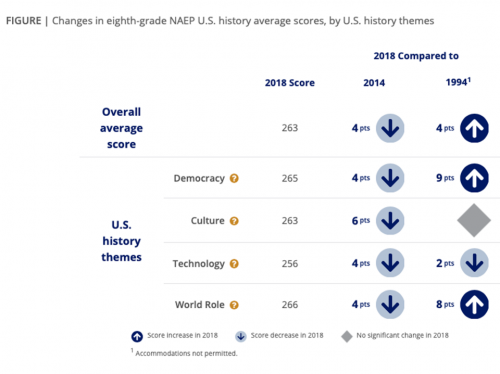For Success In Schools Post-Coronavirus, Education Must Transcend Location
Forbes | May 5, 2020
By Jeanne Allen, Founder and CEO of CER

Academica students and teachers engage in virtual classrooms from all over the country. ACADEMICA
With the doors to most of K12 and higher education shut for the rest of the academic year and beyond, it’s time to implement a dramatically different way of educating our nation’s youth, and make it stick. We can’t allow our kids to stop learning and slide back because facilities are closed.
Where you live is no longer relevant right now, and may not be relevant consistently over the next two years as the nation jigsaws its way through possible repeat outbreaks of COVID-19. What is relevant is the ability to deliver education seamlessly, via low- and high-tech tools, with substantive programming, expectations and American ingenuity. Innovation is happening, and it’s the innovative institutions we must seek to expand and emulate.
And indeed, across the country, tens of thousands of students are “going to school” from their homes. But those are the fortunate minority, whose families happen to live either in school districts led by aspirational leaders, or who attend a myriad of diverse schools, most charters, some private, some specifically designed to be virtual.
If you’re lucky, your kids attend schools managed by Friendship Public Charter Schools in Washington, DC, Academica, with more than 90 charter schools in nine states, or networks like Charter Schools USA, National Heritage Academies, Rocketship, Seton, Success, and Vista College Prep and hundreds more around the nation.
If you’re lucky, your students go to school in Colorado, Florida, or Rhode Island, where governors expect students to be taught remotely, though how well still depends on the quality of your school.
But why must people be lucky to get educated, even during a pandemic? We’ve had access to world class technology that removes barriers to educating and connects subject matter experts, coaches, educators, and families for more than a decade.
The truth is that students need not remain “assigned” to their current zip code to be educated. The very concept of zoning students by where they live is a 100-year-old concept. Districts were created to provide support services and central management of funds and programs for the schools in their “zone” for the purpose of allowing schools and educators to focus on the students.
Those once small, locally controlled and independent districts once numbered over 100,000 with each community responsible for its own schools (and as a result much more responsive to its constituency). Today, fewer than 14,000 districts exist, consolidated since 1940 into powerful, centralized bureaucracies closely resembling feudal states.
To be sure, there are those who argue that large, consolidated governments are more efficient. But that’s in theory. Because while it may sound rational, it simply hasn’t resulted in successful education for the vast majority of students, particularly in large districts.

Changes in eight-grade NAEP U.S. history average scores, by U.S. history themes NAEP: THE NATION'S REPORT CARD
The failure of most of those very districts to educate the majority of students has never been more apparent. One can look at the most recent scores on the National Assessment of Educational Progress, where a paltry 15 percent of eighth-grade students are proficient in history, and fewer than 24 percent and 25 percent are proficient in civics and geography, respectively.
Or you can look at the fact that when the pandemic closed school facilities, it took weeks for most districts to turn out programs for their kids. They stalled, challenged by their signature inefficiency and ongoing adversity to innovation that left them totally unprepared to take learning online.
Every student, regardless of city or state, should be able to attend a school that can provide the education that their parents believe they can handle - right now, at this moment in time. Each student must be able to go beyond their school, district, or even state lines to obtain that education from a school that can and wants to deliver for them.
And even without a crisis, why should the challenges of life - a parent’s job loss, an illness, or (on the upside) an opportunity to travel or change jobs - get in the way of a student’s education?
We must not return to normal, as normal is a nation where fewer than 30% of students - and fewer than 15% in poor communities - read, write, spell, do math or know history, science, or civics on grade level. Normal is an education system which has consistently failed to deliver what students need and isn’t permitted - by its very design - to put student interests ahead of rules and contracts.
Most families long for some normalcy. But the response by schools and districts to this pandemic is a wake-up call. Given the choice to go back to “normal,” or to choose a new, different school for their child, in either case most will likely choose to be “in” a school with buildings, people, educators, and other students close by. That doesn’t preclude education happening in new and better ways, however, starting now.
READ: The Future of Schools CER’s report sets a new course for policymakers, advocates and families and educators to follow as we work to reshape education during (and after) COVID-19.
Founded in 1993, the Center for Education Reform aims to expand educational opportunities that lead to improved economic outcomes for all Americans — particularly our youth — ensuring that conditions are ripe for innovation, freedom and flexibility throughout U.S. education. |














